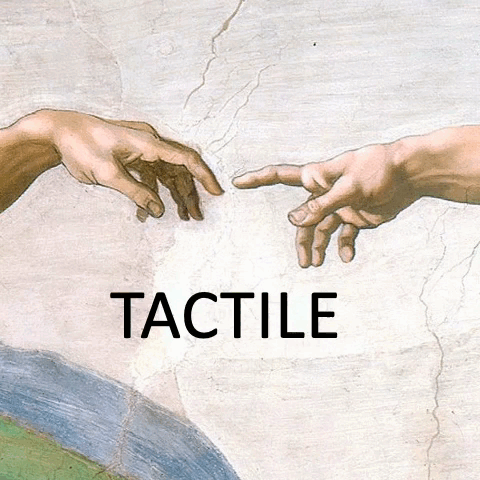
This exploratory study was designed to examine the effects of visual experience and specific texture parameters on both discriminative and affective aspects of tactile perception. To this end, we conducted two experiments using a novel behavioral (ranking) approach in blind and (blindfolded) sighted individuals. Groups of congenitally blind, late blind and (blindfolded) sighted participants made relative stimulus preference, aesthetic appreciation and smoothness or softness judgment of 2D or 3D tactile surfaces through active touch. In both experiments, the aesthetic judgment was assessed on three affective dimensions, Relaxation, Hedonics, and Arousal, hypothesized to underlie visual aesthetics in a prior study. Results demonstrated that none of these behavioral judgments significantly varied as a function of visual experience in either experiment. However, irrespective of visual experience, significant differences were identified in all these behavioral judgments across the physical levels of smoothness or softness. In general, 2D smoothness or 3D softness discrimination was proportional to the level of physical smoothness or softness. Secondly, the smoother or softer tactile stimuli were preferred over the rougher or harder tactile stimuli. Thirdly, the three-dimensional affective structure of visual aesthetics appeared to be amodal and applicable to tactile aesthetics. However, analysis of the aesthetic profile across the affective dimensions revealed some striking differences between the forms of appreciation of smoothness and softness, uncovering unanticipated substructures in the nascent field of tactile aesthetics. While the physically softer 3D stimuli received higher ranks on all three affective dimensions, the physically smoother 2D stimuli received higher ranks on the Relaxation and Hedonics but lower ranks on the Arousal dimension. Moreover, the Relaxation and Hedonic ranks accurately overlapped with one another across all the physical levels of softness/hardness, but not across the physical levels of smoothness/roughness. The theoretical and practical implications of these novel findings are discussed.
A.K.M. Rezaul Karim, Sanchary Prativa, Lora Likova, "Perception and appreciation of tactile objects: The role of visual experience and texture parameters (JPI-first)" in Proc. IS&T Int’l. Symp. on Electronic Imaging: Human Vision and Electronic Imaging, 2022, pp - , https://doi.org/10.2352/J.Percept.Imaging.2022.5.000405
 Find this author on Google Scholar
Find this author on Google Scholar Find this author on PubMed
Find this author on PubMed